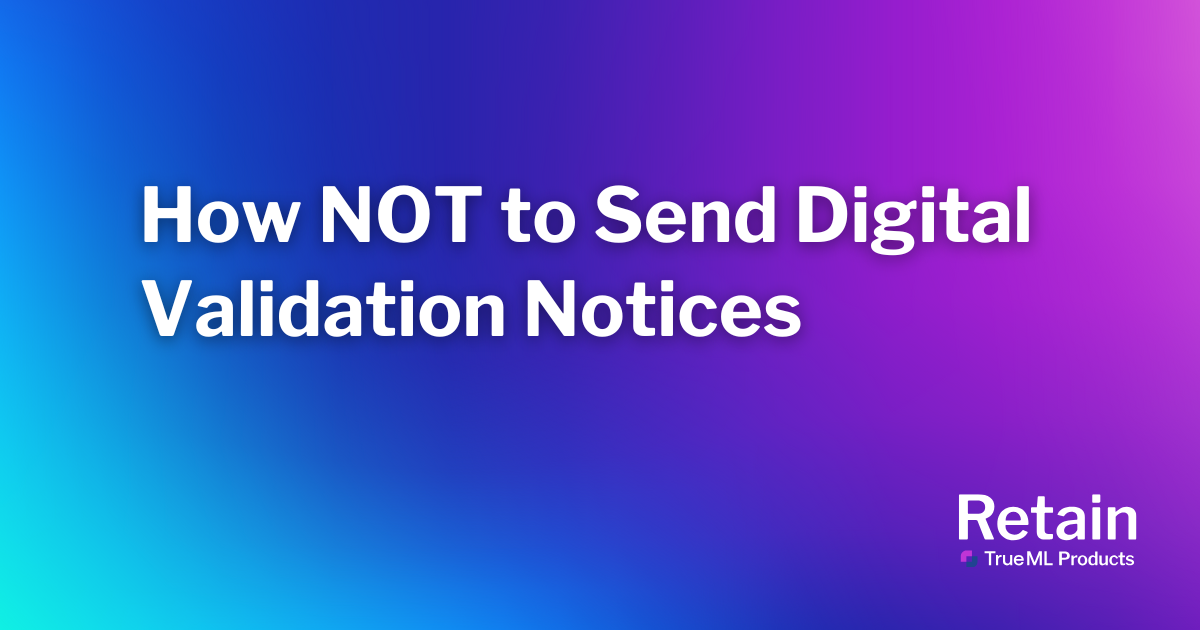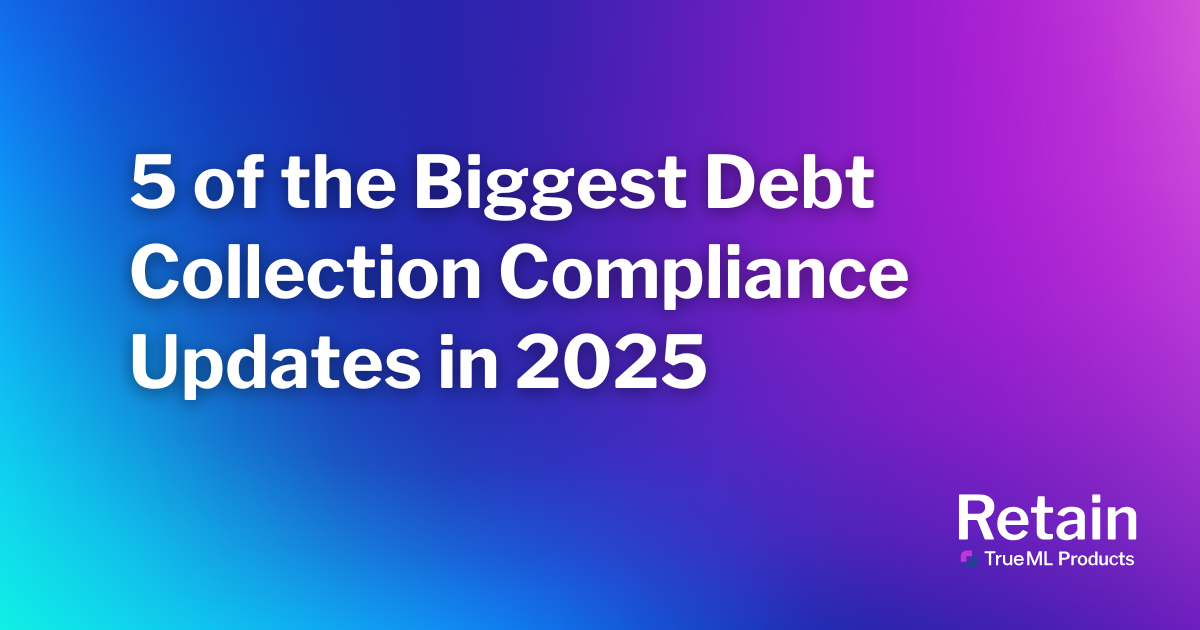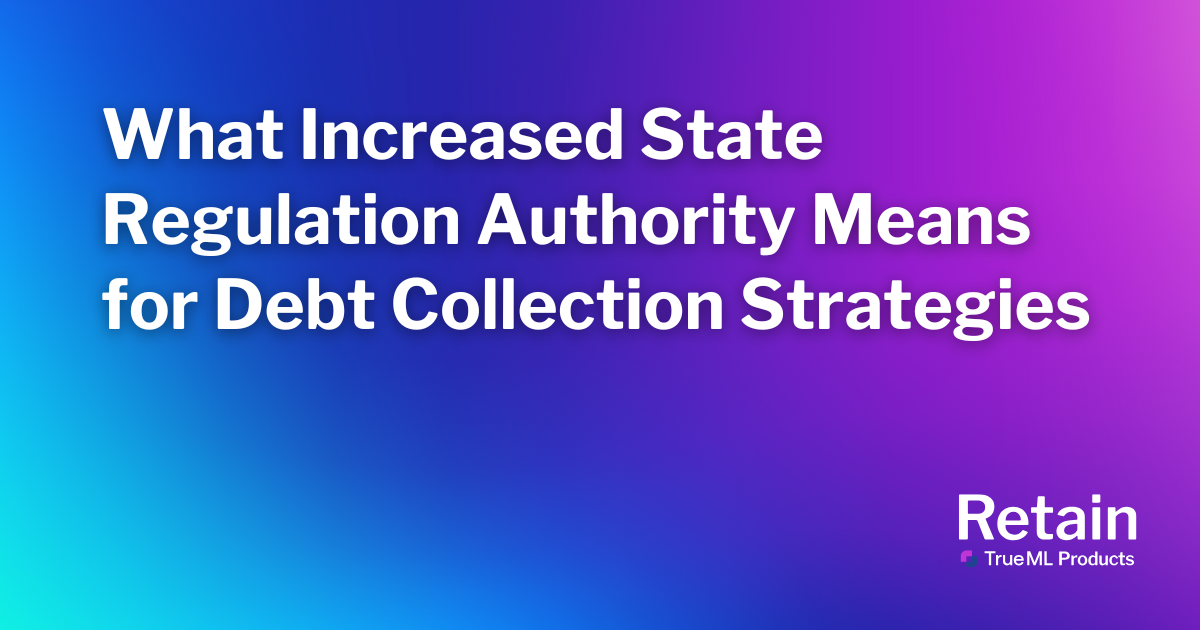More and more of the debt collection industry is going digital. Digital communication channels like email and text messages give businesses the opportunity to meet consumer preferences while reducing OpEx. Just like many other debt collection compliance rules, there’s a right way and a wrong way to engage with defaulted accounts using digital communications.
To leverage digital debt collection strategies for defaulted accounts, a core component is how to compliantly send the initial validation notices. If your business doesn’t get this process right, there’s regulatory headaches, consumer confusion and legal risks you’ll have to deal with. To tackle this important topic in digital debt collection strategy, we’re going to highlight the “NOT strategy” that goes against best practices. Let’s take a look at how NOT to send digital validation notices.
How NOT to Tip 1: Forgetting About Opt-Outs in Collections Compliance
One of the worst ways to send a digital validation notice is to forget about opt-outs. Specifically, businesses that do not have processes in place to stop communicating with consumers who have opted-out of a particular medium are in for some trouble. Also, businesses can’t designate exclusive revocation methods and have to honor any opt-outs reasonably conveyed. For example, if a consumer uses different wording than standard keywords such as “stop” in a text message, it still counts as an opt-out. Consumers can use a variety of common ways to opt-out such as:
- Text Messages: Consumers can respond to a text with words like “stop”, “quit”, “unsubscribe” or “cancel” to opt-out.
- Email: Click on the “opt-out” or “unsubscribe” button that businesses are required to include when sending digital validation notices through email. Consumers could also email a business directly with their request or verbally convey an opt-out over the phone.
Shifting from opt-outs to consent, consent is not required to send a validation notice electronically if the validation notice is the first communication with the consumer. Regulation F makes clear that E-SIGN consent is required to send the validation notice electronically only if you’re sending the validation notice after your initial communication with a consumer.
How NOT to Tip 2: Ignoring Email Deliverability
A digital validation notice can’t do its job if it doesn’t make it to a consumer’s inbox. Digital debt collection strategies that follow the “NOT” approach often don’t put much emphasis on email deliverability. The worse your email deliverability is, the more likely your digital validation notices end up in email spam folders.
Domain reputation also plays a big factor in email deliverability as well. Think of domain reputation as a running account of how trustworthy internet service providers (ISPs) and email service providers (ESPs) think a business’s emails are. The “NOT” strategy would involve using spammy subject lines, not regularly cleaning your email lists and sending bursts of messages in a short time frame. These actions will harm your domain reputation, making it more likely that digital validation notices sent through email would be flagged as spam.
It’s also important for businesses to keep a digital paper trail of all the validation notices that are being sent to consumers. Not only does this help ensure each message was delivered, but it also assists with the audit process.
How NOT to Tip 3: Prioritizing Call-to-Actions in Digital Validation Notice Emails
The primary purpose of sending a digital validation notice through email is to inform a consumer of their 30-day right to dispute a debt or ask for verification. Naturally, the “NOT” strategy involves using eye-catching call-to-actions to draw attention away from that important goal. To be clear, any flashy call-to-action like a giant “PAY NOW” button could be seen as overshadowing a consumer’s rights.
Businesses that subscribe to the “NOT” digital debt collection strategies try to make prompting a payment the main focus, instead of providing important information about the debt. Digital validation notices also have to include a prompt the consumer can use to dispute the debt. Poorly designed call-to-action buttons can get in the way of that requirement. The dispute link or button should be noticeable and convenient for consumers to exercise. Fans of the “NOT” strategy shouldn’t include clear headlines, such as “How would you like to respond?” in the digital notice.
How NOT to Tip 4: Not Following Timing Rules
The Fair Debt Collection Practices Act (FDCPA) and Regulation F lay out clear guidelines for sending validation notices digitally. Businesses need to make sure to avoid sending validation notices outside of permissible hours. The notice also has to be provided either in the initial communication, or sent to the consumer within five days of first contact.
Regulation F also requires businesses to monitor for the deliverability of validation notices. So, businesses need to check and make sure that notices don’t end up in spam folders. One of the best ways to adhere to these rules is to send your digital validation notices as the initial contact.
How NOT to Tip 5: Making it Challenging to See the Validation Notice
For most emails sent to consumers, consumers clicking on a link or downloading a PDF would be a great outcome because it shows engagement with the email. That’s not the case when sending digital validation notices. It’s enticing for businesses to tell consumers to click a link or view an attached PDF to receive the validation notice. However, putting more barriers in front of the notice should be avoided. Remember that accessibility is key, consumers shouldn’t have to click, guess or log into a separate portal to see this important notice. Don’t follow the “NOT” strategy, and instead follow these best practices:
- Do not hide the validation notice behind hyperlinks or passwords. If you’re sending an email, the required notice should be included in the body of the message. If you attach the validation notice, and require a password to open the PDF, that is not likely to be viewed as effectively delivering the notice.
- It’s important to have a clear subject line. Regulators and courts expect businesses to send straightforward messages that use consumer-friendly language. When emailing the validation notice, the CFPB’s official interpretation advised that the subject line include the name of the creditor to whom the debt is currently owed and one additional piece of information identifying the debt (other than the amount), such as a truncated account number.
- When sending digital validation notices through email, there shouldn’t be any extra clicks or steps to see the information.
These days, consumers are getting more scam emails and texts than ever before. By following these best practices and sending digital validation notices the right way, you’ll help consumers get important information about their debt without seeming suspicious.
Case Study: How NOT to Send Your Digital Validation Notice
In Lavallee v. Med-1, the issue was whether a debt collector complied with the Fair Debt Collection Practices Act (FDCPA) when it attempted to send a validation notice by email instead of postal mail. Med-1 sent a consumer two emails. The subject lines said “You have a message,” and the body of the email contained a hyperlink that, when clicked, would direct the consumer to a secure website where the actual validation notice was stored.
The consumer never opened the links and therefore never saw the validation notice. She later argued the debt collector failed to provide the notice required by §1692g of the FDCPA (the 30-day validation notice). The Seventh Circuit agreed with the consumer: the collector did not effectively “provide” the notice. Simply sending an email with a vague subject line and a link to a separate site was not sufficient to satisfy the FDCPA.
Send Digital Validation Notices the RIGHT Way with Retain
Retain automates digital debt communications and has advanced compliance controls built-in. Our software and team can work with your business to ensure that digital validation notices are sent the right way. Retain also has strict ownership and deliverability checks for safely delivering emails and text messages to your customers. Schedule a consultation today, and learn more about digital validation notice best practices.



